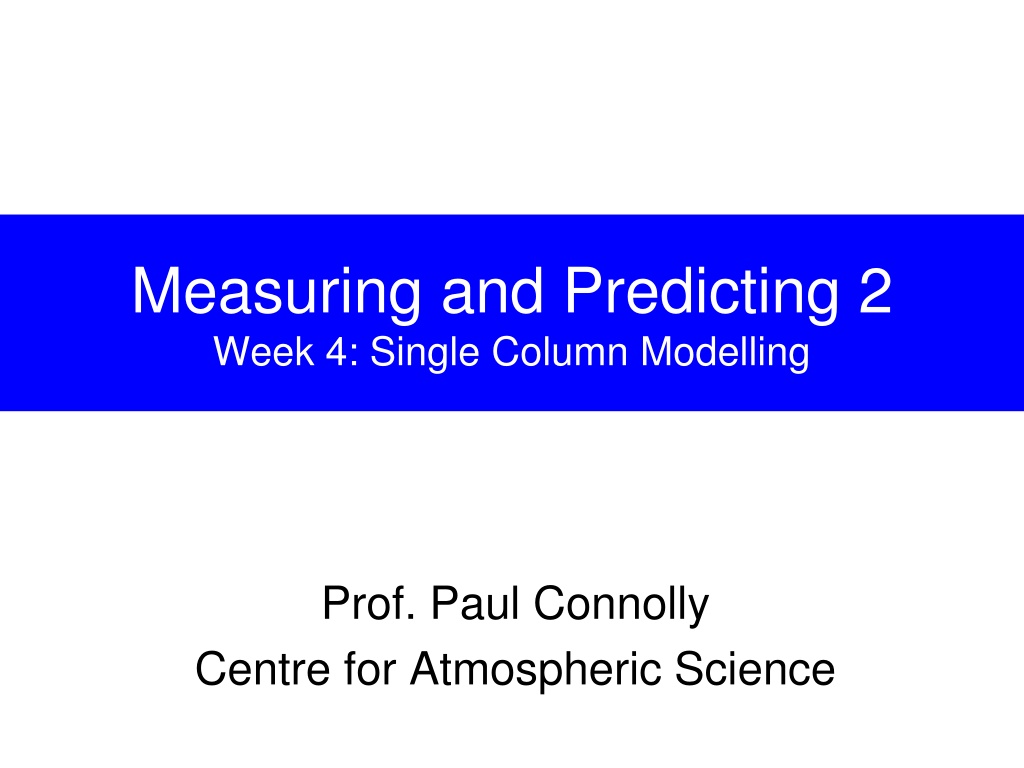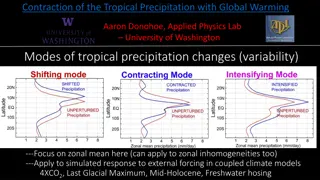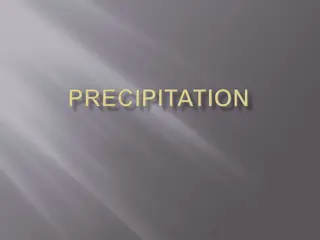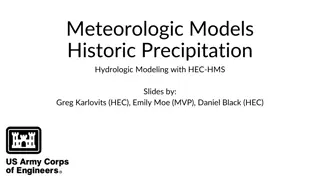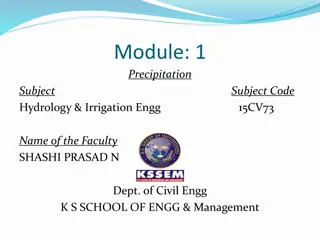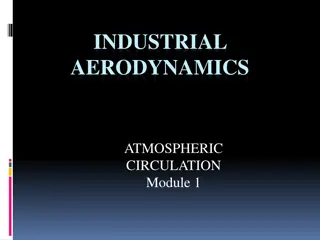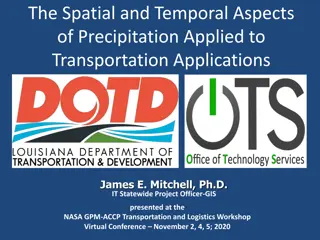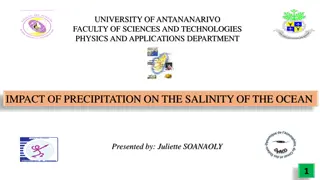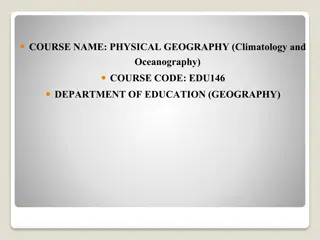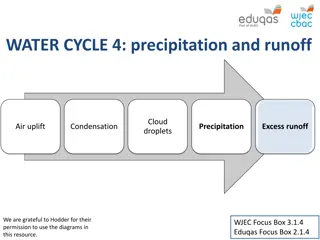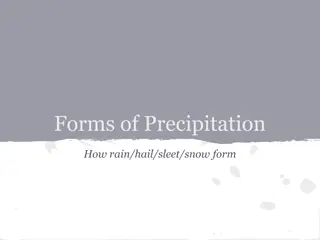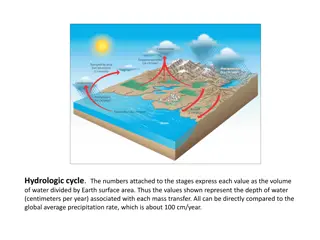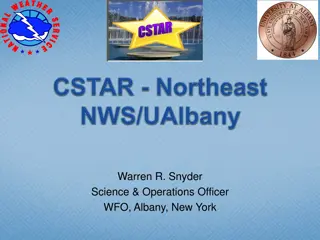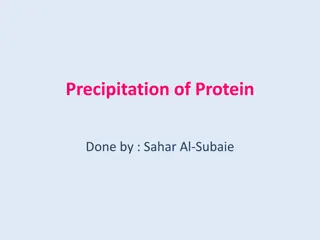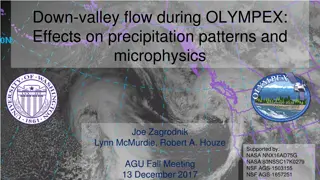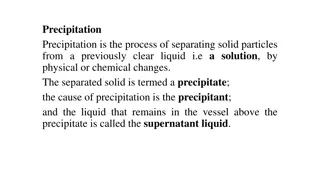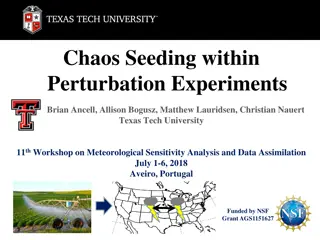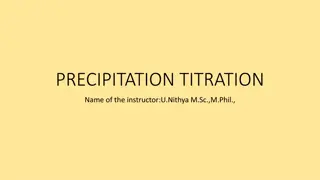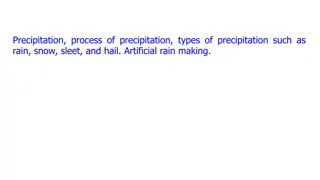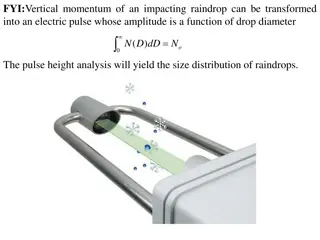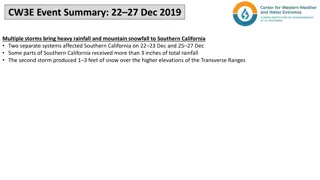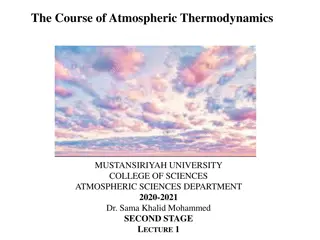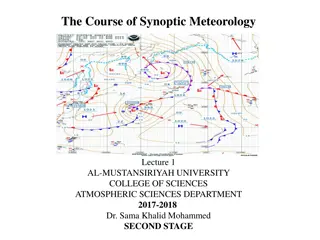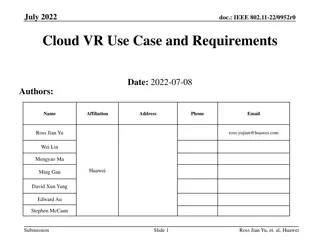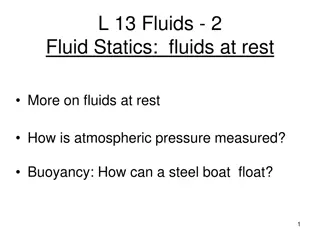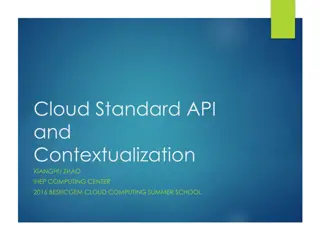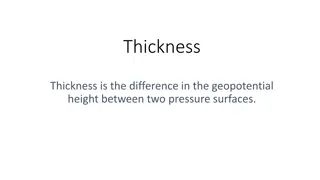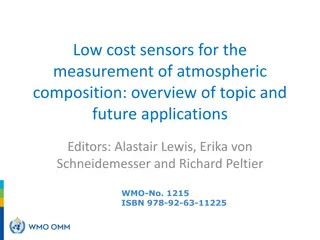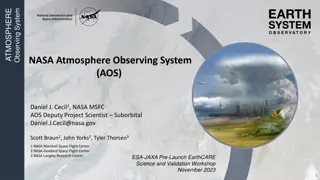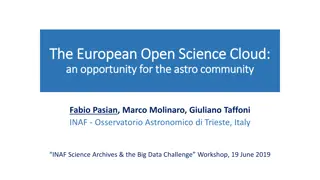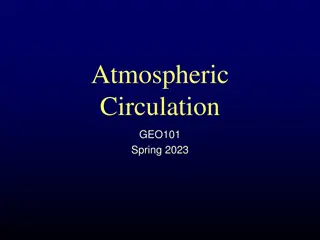Understanding Cloud and Precipitation Processes in Atmospheric Science
This week's module focuses on measuring, predicting, and modeling single-column processes related to clouds and precipitation. Topics covered include ODE and PDE models, advection equations, orographic clouds, warm and cold cloud processes, condensation, warm-rain processes, and more. The importance of the vertical coordinate in modeling scenarios is emphasized, along with the significance of various factors in the growth and formation of precipitation. Through an interdisciplinary approach, students delve into the complexities of atmospheric science to gain a deeper understanding of cloud and precipitation phenomena.
Download Presentation

Please find below an Image/Link to download the presentation.
The content on the website is provided AS IS for your information and personal use only. It may not be sold, licensed, or shared on other websites without obtaining consent from the author. Download presentation by click this link. If you encounter any issues during the download, it is possible that the publisher has removed the file from their server.
E N D
Presentation Transcript
Measuring and Predicting 2 Week 4: Single Column Modelling Prof. Paul Connolly Centre for Atmospheric Science
Contents This week Download code Run compiled code to numerically solve ODE - PDE model Look at model output and interpret results Scenario we are modelling Cloud and Precipitation Processes Primer Lagrangian approach vs the Eulerian approach The advection equation (a Partial Differential Equation, PDE) Details of the Model Solving ODEs and PDEs together Conserved variables Potential temperature Water vapour Equations of the model
The scenario we are modelling this week the vertical coordinate is very important
Cloud and Precipitation Processes Cold Cloud Processes The vertical coordinate is important! Warm Cloud Processes Platnick
Condensation We talked about the condensation and evaporation of water vapour onto droplets in week 3. We are able to grow small drops this way. It is described by an Ordinary Differential Equation (ODE). It is important to increase the size of aerosol particles into drops, but it would take 10s of days to grow an aerosol particle into a rain-drop sized particle! James Clerk Maxwell (1831 1879) Diffusion of vapour to a growing drop There must be other important processes (liberating latent heat) mi
Warm-rain process If some droplets become slightly larger than others they will fall faster through the air. If a smaller drop is in the path of this larger drop the larger drop will collide and coalesce with it The larger drop grows and collect the smaller drop This is referred to as the warm-rain process because it does not include ice An ODE describes how a drop of mass, mi grows due to this process. If a drop is collected, the number of them also decreases. This is more efficient the larger the drops Can lead to rain in ~20 minutes
Cold rain process Benjamin Franklin (1784) much of what is rain, when it arrives at the surface of the earth, might have been snow, when it began its descent University of Reading (Dr R. Hogan)
The formation of ice crystals requires rare aerosol particles Murray et al, 2012, CSR Similar to Cloud Condensation Nuclei (CCN) for liquid We have Ice Nucleating Particles (INP) for the ice phase Dust from the deserts is an important INP in the atmosphere There are ODEs to describe the rate of ice crystal formation and growth
Lagrangian and Eulerian models part 2 Lagrangian: If a variable is conserved in a parcel, its rate-of- change in a frame of reference that follows the parcel is zero Eulerian: We can represent a conservedvariable in a frame of reference that does not move (i.e. on fixed grid points) Apply the chain rule Lenard Euler: 1707-1783 Joseph-Louis Lagrange: 1736-1813 ?? ??=?? ?? ?? ??+?? ?? ?? ?? but is just the velocity, u. so the equation for a conserved variable in the Lagrangian framework is: so the equation for a conserved variable in the Eulerian framework is (also known as advection): ?? ??= 0 ?? ??+ ??? ??= 0
Numerical diffusion, and stability of the advection eq The advection equation usually requires that the time-step used is sufficiently small. You must choose the time- step such that CFL=0.6 CFL=? ? ? is less than 1, otherwise the solution is unstable This requirement is known as the CFL criterion. Still does not solve the artificial spreading in the solution known as numerical diffusion CFL=1.2
Details of the model Solve ODEs for fixed parcels and transport variables between layers Each vertical level has its own set of ODEs Solve ODEs over 1 time-step, t Then transport variables by solving advection Partial Differential Equation (PDE) Velocity is based on fall-speed of rain-drops: -vfall and movement of air updraft, w Advection equation Repeat
Conserved variables We apply the advection equation to conserved variables. i.e. variables that don t change along a path (in the Lagrangian sense) After the advection step ODEs may alter these conserved variables. e.g. water vapour may condense onto droplets or ice particles. Cloud drops may evaporate into water vapour. There is an important conserved variable that atmospheric models use which is called potential temperature, It is a property of air that does not change when the air is advected to a region of different pressure. It does change due to condensation however, and this is calculated in the ODE step. We can advect with the air and then rearrange to find the new temperature, T.
Conserved variables Measurements in atmosphere In this location air thermals (parcels) are rising from the ground to 1000m. Clouds are forming at 700m Note the temperature lapse rate (right) shows 10 degC per km. Potential temperature (left) is a constant from the ground up to cloud base.
Main points This week we are actually solving ODEs at many levels and PDEs between levels to run the simulations. More expensive, so we ll be using compiled code (FORTRAN) Cloud and Precipitation processes are important. You will learn about these in other modules. But: Condensation too slow for rain Warm-rain drops collide and coalesce fast! Warm-rain is dependent on the number of cloud drops which we found depends on the number of aerosol particles (week 3). Cold-rain nucleation and growth of ice particles which can fall as snow or rain (if they melt) Cold-rain depends on ice nucleating particles these can be rare. Desert dust is an important INP. Advection / or Transport equation This is a partial differential equation and we are solving it on an Eulerian grid Has problems such as numerical diffusion and stability considerations Time-splitting method: if we are solving ODEs and PDEs together we can use time-splitting. We will calculate these things ourselves in the practical synchronous session
